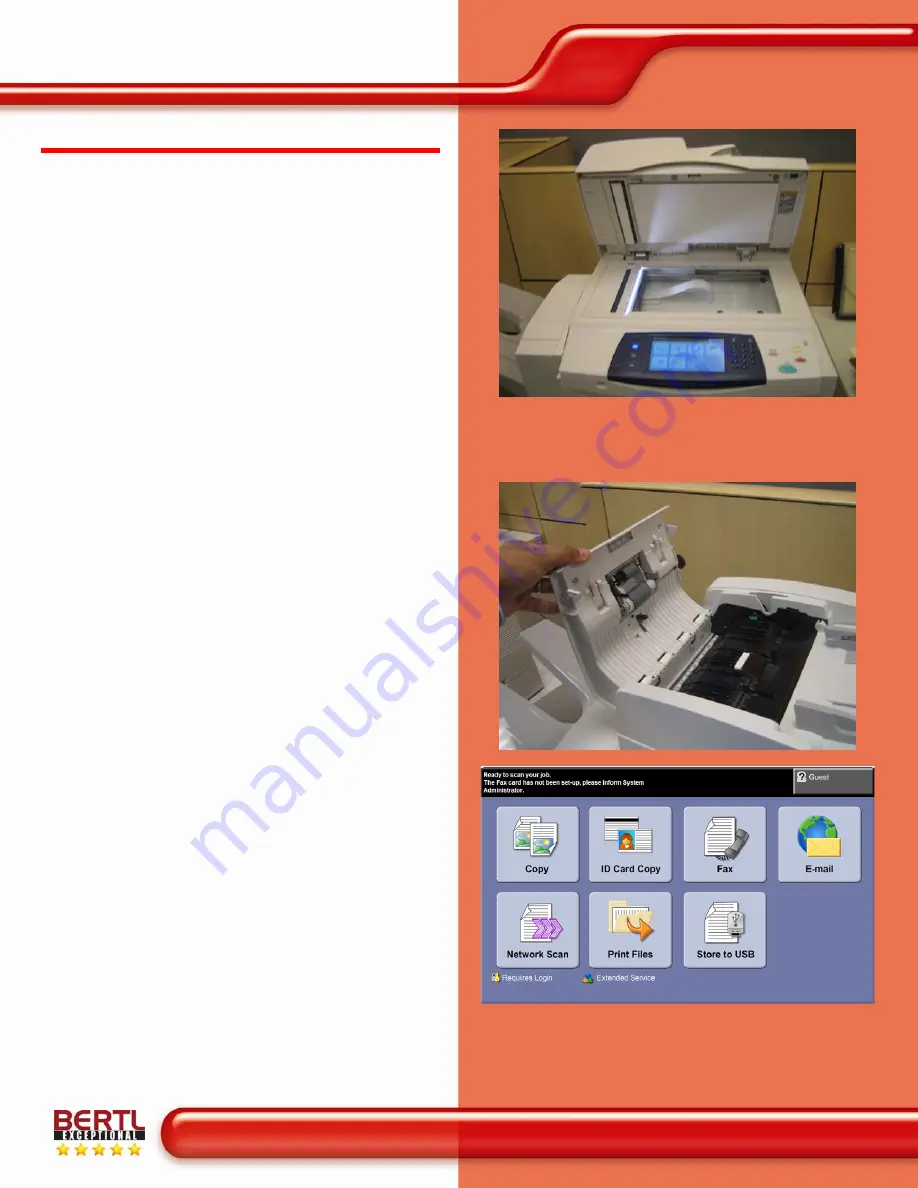
Copy
April 2009
Xerox WorkCentre 4260 XF
www.BERTL.com
Copyright © 2009 BERTL Inc.
April 2009
All Rights Reserved. The license under which this document is made available and applicable law prohibit any reproduction or further transmission of any portion of this document. This
document may only be viewed electronically through the www.BERTL.com Web site and may not be stored in electronic or hard copy format. Any reproduction of trademarks is strictly
prohibited. BERTL accepts no responsibility for any inaccuracies or omissions contained in this document.
Page 12
BACKGROUND
Nearly all MFPs on the market today provide digital
copying, while many desktop printers offer it as an option.
Despite the fact that many devices provide a wide range of
digital-copying capabilities, from image manipulation to
page insertion, most typical copy jobs actually consist of a
single set of a simplex document that is five pages or less,
with no finishing, and no image-quality manipulation.
Small Simple Jobs
Although most MFPs provide a wide range of copying
features, most users are not willing to navigate through
countless screen menus in order to get to the point where
they can actually press the
Start
key. There are two
components of copy-job productivity: 1) user productivity,
and 2) device productivity. BERTL encourages enterprises
to also consider the impact of
user
productivity, along with
device productivity. Device productivity only includes the
time it takes from the press of the
Start
key until the final
copy exits the device, and does not take into account the
time that it takes a user to program and start the copy job.
However, the easier the job, the easier it is to program;
users will also take less time to program jobs as they
acclimate to the controls and/or create job programs. And,
of course, some users are more astute and capable than
others. Consequently, these uncontrolled factors introduce
a high degree of variability. However, of course, a device
that takes twice as long to produce the first copy affects the
job productivity of each and every user and job.
Large, Complex Jobs
Even with large copy jobs—where it seems engine speed
plays the largest role—user productivity should be taken
into account. For example, the user is less likely to wait at
the copier for larger and more complex jobs. Factors that
enhance user productivity include such features as easy
job programming; a scan-ahead feature so that users can
program and scan jobs while other jobs are printing; fast
original scanning so that users can more quickly return to
their desks with their originals; the ability to build a job
using a mix of different-size originals scanned from both
the document feeder and platen; and job notification at the
computer desktop when the copy job is completed (thus
eliminating the guesswork of when to return to the copier to
collect the job).
Above and below:
The WorkCentre 4260’s platen
(above) and document feeder (below), with the document
feeder’s cover opened in order to expose the feeder’s
misfeed-access area.
The “Services Home” button on the main control panel
displays all of the device’s available functions. Available
options include Copy, ID Card Copy, Fax, E-mail, Network
Scanning, Print Files, and Store to USB.













































